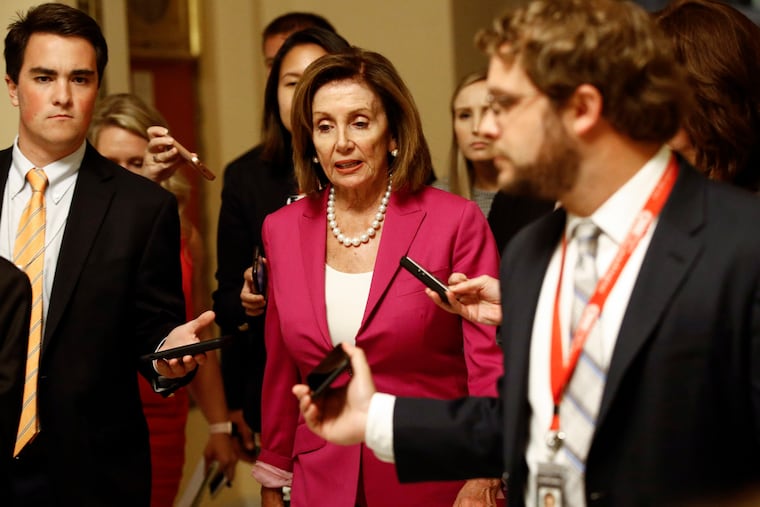Budget deal between White House, Congress likely to include few or no cuts, lift debt ceiling for 2 years
The agreement appeared likely to mark a retreat for White House officials who had demanded major spending cuts in exchange for a new budget deal.

WASHINGTON — White House and congressional negotiators rushing to hammer out the final details of a sweeping budget and debt deal are unlikely to include many — if any — actual spending cuts, even as the debt limit is lifted for two years, people familiar with the talks said.
The agreement appeared likely to mark a retreat for White House officials who had demanded major spending cuts in exchange for a new budget deal. But the process remained in limbo while negotiators awaited final approval late Sunday from President Donald Trump.
The pending deal would seek to extend the debt ceiling and set new spending levels for two years, ratcheting back the budget brinkmanship that led to a record-long government shutdown earlier this year.
But instead of the $150 billion in new spending cuts recently demanded by White House acting budget director Russell Vought, the agreement would include a significantly lower amount of reductions. And those reductions aren't expected to represent actual spending cuts, in part because most would take place in future years and likely be reversed by Congress at a later date. A precise figure wasn't available.
Details remained fluid and subject to change, according to the people describing the talks, who spoke on the condition of anonymity because they were not authorized to reveal details.
In practical terms, the budget agreement would increase spending by tens of billions of dollars in the next two years, a stark reversal from the White House's budget request several months ago that sought to slash spending at many agencies starting in October.
As some White House officials backed away from demands for spending cuts, their focus shifted to trying to block an attempt by Democrats to restrict funding for a wall along the Mexico border.
As part of the deal to raise military and spending levels for two years, White House officials were attempting to convince House Speaker Nancy Pelosi, D-Calif., to back off on certain policies Democrats hoped to include in future spending bills. One point of contention involved the administration's authority to transfer money between budget accounts to finance construction of a wall along the Mexico border.
Democrats have fought to limit or eliminate the White House's ability to transfer money in this way, but White House officials have pushed hard to retain the flexibility to do so. The exact resolution was uncertain.
A central focus of the budget agreement would be the suspension of the debt ceiling for two years, forestalling what many budget experts believe would be a catastrophic default. Treasury Secretary Steven Mnuchin has warned that his agency could run out of money by early September if the debt ceiling isn't raised by then. Because talks remained fluid, it's possible negotiators could seek to change the debt limit timeline based on input from Trump.
Mnuchin has served as the primary negotiator with Pelosi and has tried to secure a deal for more than a week, but some other White House officials have tried to push for more spending cuts.
The agreement is expected to set new overall spending levels for the 2020 and 2021 fiscal years, reducing chances of another government shutdown by giving lawmakers a road map to write new spending bills before the current ones expire Oct. 1. Agreeing on new spending levels also avoids onerous budget caps that would otherwise snap into place automatically under an Obama-era deal, and indiscriminately slash $126 billion from domestic and Pentagon budgets.
The agreements on the debt limit and the budget caps had been long sought by lawmakers of both parties, but achieving them had been uncertain. Negotiations occurred directly between Mnuchin and Pelosi in recent days, but final sign-off was needed from Trump and remained uncertain.
If the deal were finalized, Pelosi would have less than a week to muscle it through the House before the chamber adjourns for a scheduled six-week summer recess on Friday. The Senate will be in session for an additional week after the House departs and would be able to use the additional time to consider the deal and send it to Trump to sign.